Syn.: Arnica hardinae H. St. John, Arnica paniculata A. Nelson
Family: Asteraceae Bercht. et J. Presl
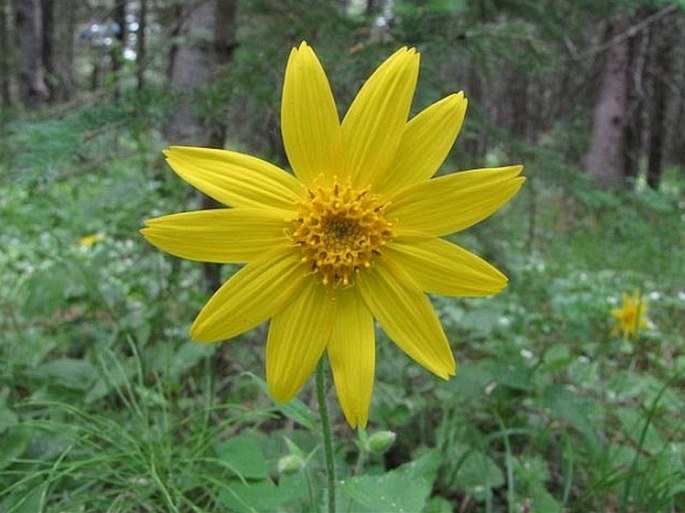
Distribution: Western part of North America – from Yukon and Northwest Territory through Michigan, South Dakota, Wyoming and Washington to New Mexico and Arizona.
Ecology: Open woods and rocky slopes, submontane to subalpine. Flowers from June to August.
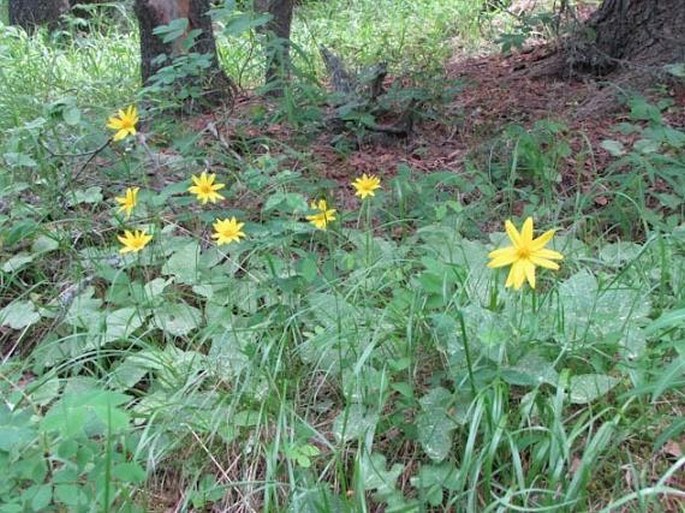
Description: Perennial herb, sparsely white-hairy; stems solitary, 10–60 cm tall, densely white-hairy just below flowerhead; from slender, widely spreading rhizomes. Leaves opposite, heart-shaped, 4–10 cm long, 3–9 cm wide, usually coarsely toothed; lowermost leaves largest, long stalked, 2–3 pairs on stem, sometimes with a pair from the base. Flower heads usually solitary, 2.5–6 cm across, involucre densely hairy, glandular, pointed and fringed at tips about 15 mm high, ray florets 9–16, showy, yellow; disc florets many. Fruits are achenes, 6.5–8 mm long, with short, stiff, white hairs; pappus of many white, minutely barbed, hair-like bristles.
Threat and Protection: Listed as endangered in Michigan.
Usage: Native people used the leaves of arnicas dressing on swellings, cuts and bruises. The Okanagan people considered heart-leaved arnica a love charm perhaps because of the shape of the leaves.
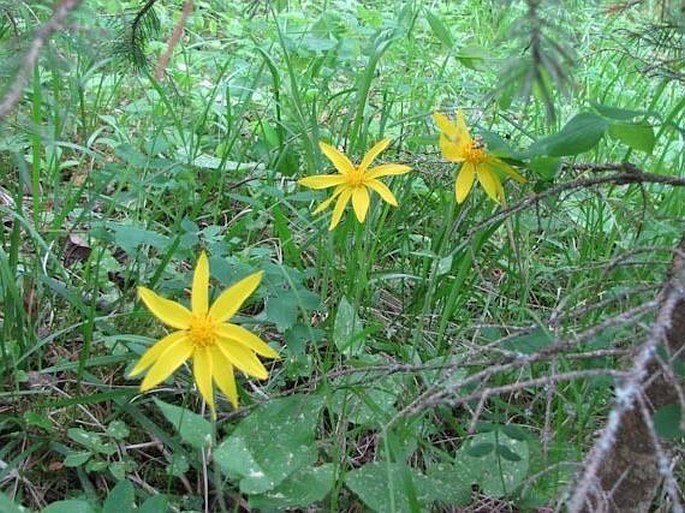
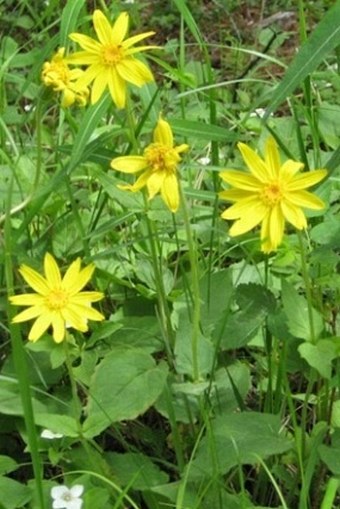
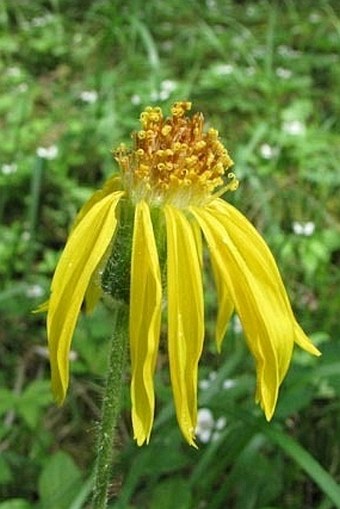
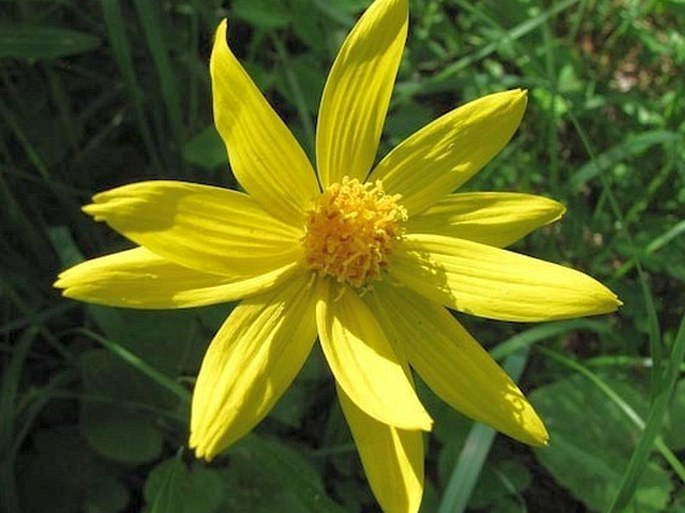
These images were taken in Canada, Alberta, Bragg Creek (July 2011).


